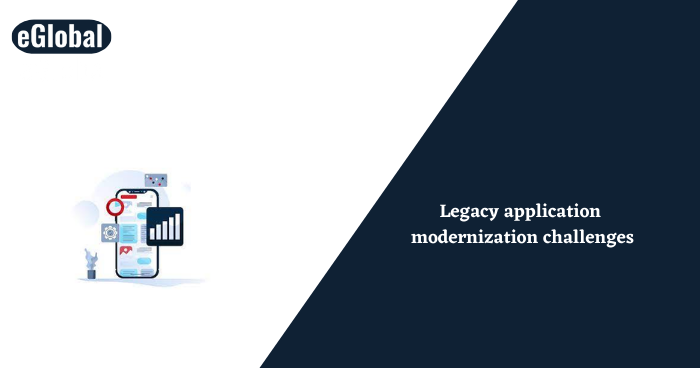

A legacy app, or legacy application, is a software program that is dated or old-fashioned. Although a legacy app still functions, it might be unreliable due to compatibility issues with modern operating systems, browsers, and IT infrastructures.
Many organizations have a strong history of managing enterprises for decades despite the rapid changes in the technology landscape. In many cases, organizations are enabled by applications running on antiquated technologies. However, there are a number of troubles in maintaining them operational, on the majority of legacy technologies.
Also check: Mobile App Development Technologies
The procedure of integrating legacy systems into an entirely new, contemporary environment is called legacy modernization or legacy application modernization. Organizations may decrease IT challenges and boost productivity, build a data-driven culture, and improve elasticity across business processes by converting from an outdated IT environment into a new one.
A legacy application, or legacy app, is a software program that is dated or old-fashioned. Although a legacy app may still function, it might be unreliable due to collaboration problems with modern operating systems, browsers, and IT infrastructures.
Most businesses use legacy software and computer systems that continue to serve particular business requirements. Often, the issue is to keep the legacy application’s functionality while converting its code to employ more efficient programming languages and technology.
The main problem in legacy application modernization is because developers no longer work for the company or are not in contact with the application. Functional and technical documentation is lacking, irrelevant, or old-fashioned. Sources of third-party programmers and libraries used are not available.
A legacy app usually corresponds to a specific version of an OS or programming language. For example, an application created to operate on Windows 7 might not be able to run on Windows 10, despite middleware or glue code being initiated by an application development team or the OS generally backward compatible.
This is the main problem in legacy application modernization because developers no longer work in the company or are no longer in contact with the application. Functional and technical documentation is lacking, irrelevant, or old-fashioned. The sources of the third-party programs and libraries used are not disclosed.
In organizations making the business case for legacy system modernization can be difficult where the culture is still resistant to change.
Change is inherently challenging. It can be even significantly harder, even when the aim cannot be achieved without the legacy system. To change such a legacy application, you must notify your workers, giving them time to conform, or even employ new personnel. Some IT staff members in charge of the legacy software will see such system maintenance as a warning to their employment.
Therefore, this IT transformation leads to changes in other divisions, which may divert resources from essential functions. Managing these organizational transformations is difficult for decision-makers.
Technological investments are not only expensive but also time-consuming: technological changes keep coming, and new developments could cost your business a lot. Which modification is worth your hard-earned profit, and how long should its life cycle be prolonged to recover the initial investment before the next one? A suggestion is to organize the functions that swear to create sufficient returns to pay for themselves. Keep firm precedence to navigate the confusion and accommodate during the conversion to a new system. Keep away from contemporary modernization.
The technological challenge from legacy code
Legacy software was written for a certain platform and functionalities. Your software re-engineering developers must possess the competencies of handling both historical code structure and current coding standards. Fixing the code of other developers frequently causes headaches among software engineers. Thus, refactoring existing codes needs people with extensive relevant experience to proceed with care.
Application modernization is updating obsolete software to communicate with newer infrastructural platforms, frameworks, and coding languages. The terms “legacy modernization” and “legacy application modernization” frequently refer to this method.
If you need to update historical programs, the best approach is based on the problem you’re seeking to solve. The digital transition has made it crucial for application leaders to discover proactive approaches to update old systems as a result of the digital shift. The biggest challenge? Be aware of the risk-to-reward ratio before performing the action.
Organizations understandably want to maintain a crucial legacy system working for as long as possible. However, organizing outdated systems can quickly become risky, costly, and time-consuming to maintain it. There comes a moment when legacy modernization becomes absolutely essential. All that is left is to decide how to modernize your legacy apps, whom to involve, and when to start. Hire best app developers in India from eglobalindia for effective app solutions.

© 2017 All rights reserved.